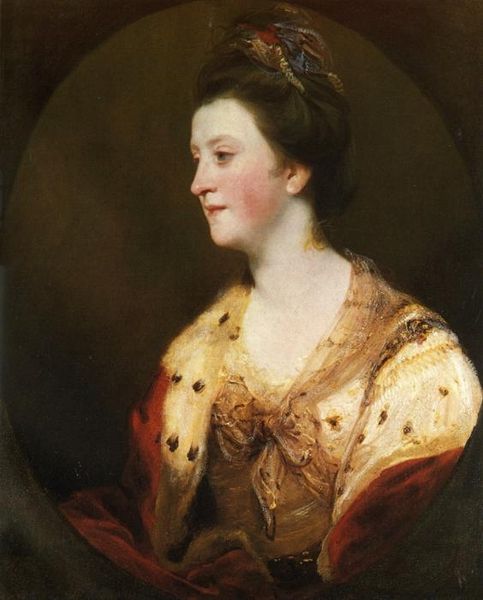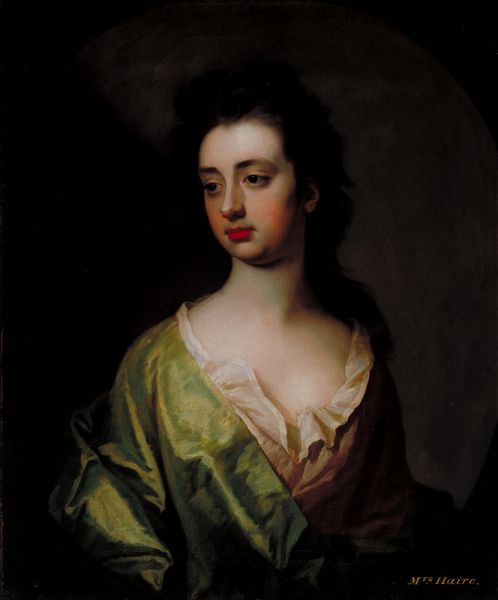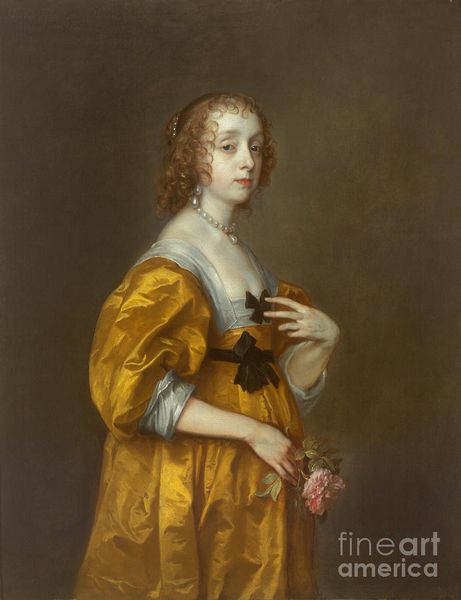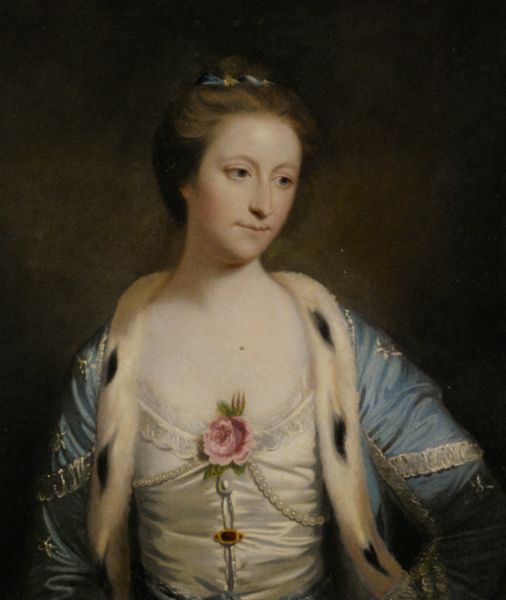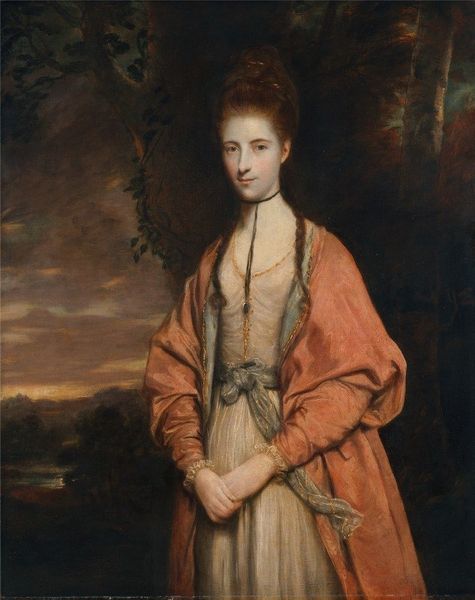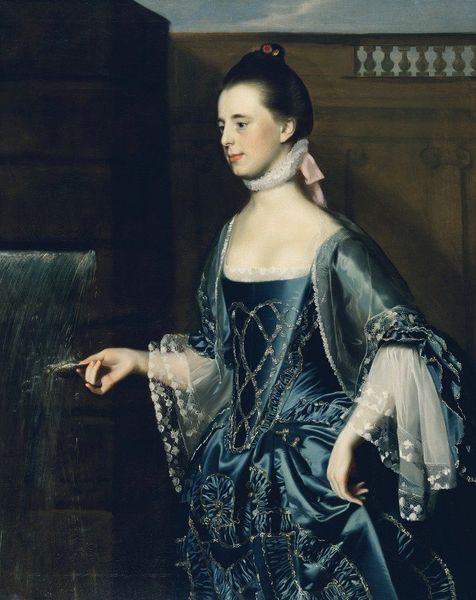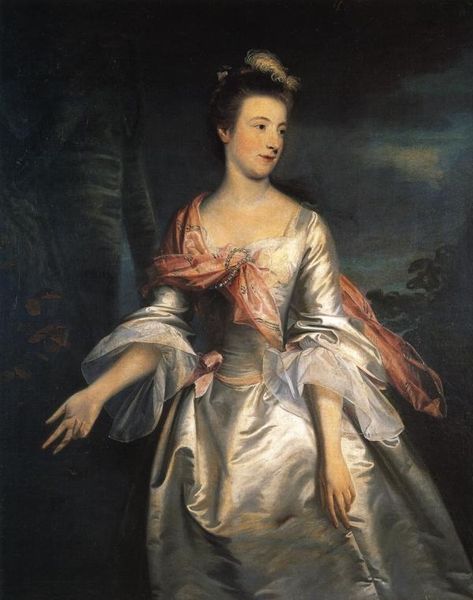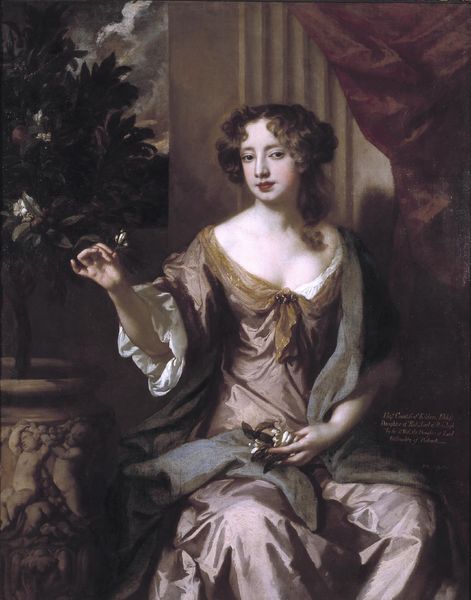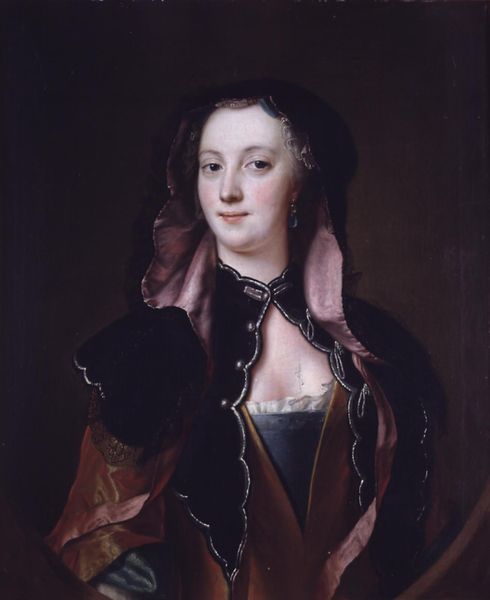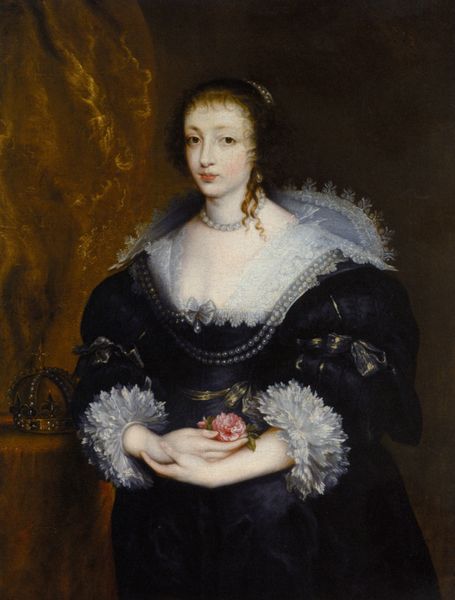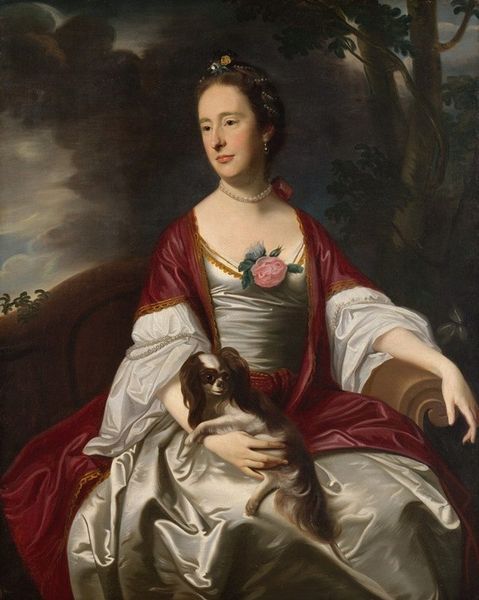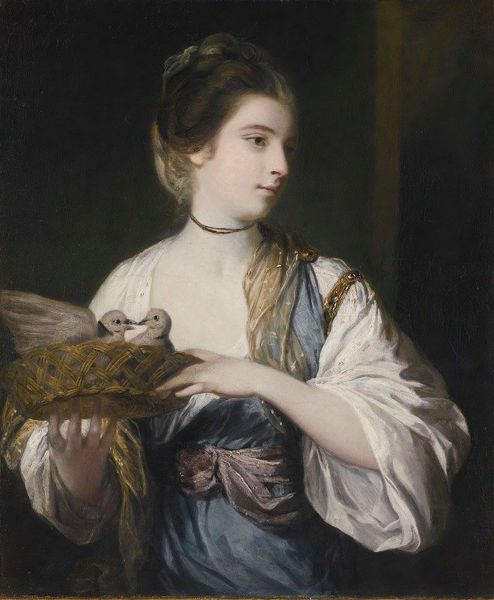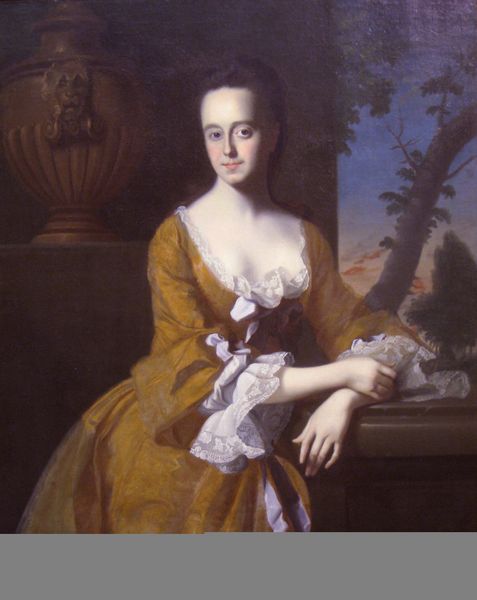
Dimensions: 76 x 63.5 cm
Copyright: Public domain
Editor: Here we have Joshua Reynolds' "Miss Isabella Thorold," painted in 1759. The portrait has a quiet, almost melancholy mood. I’m intrigued by how the figure seems both present and distant at the same time. What symbolic meanings do you find resonating in this piece? Curator: This work acts as a potent vessel, carrying a tapestry of cultural memory from the mid-18th century. Observe the rose at her breast, for instance. Its delicate beauty contrasts with the shadowed landscape, which is rendered in looser, more atmospheric brushstrokes. Roses have signified love, secrecy, or transience throughout history, but their meaning changes over time, reflecting cultural shifts. Is there an echo of vanitas here? Editor: Perhaps, a suggestion of fleeting beauty? But how much can we really interpret from a single flower? Curator: Consider how Reynolds manipulates light and shadow to further charge the symbol. The dim light in the backdrop contrasts with the illuminated face. What effect does this contrast create? Editor: It definitely highlights Miss Thorold's gaze, which seems almost averted, thoughtful. Is this then indicative of inner life and intellect? Curator: Precisely! The rose, no longer simply decorative, gains depth as a symbol of potential introspection, beauty cultivated even as shadows lengthen. The portrait thus speaks of an evolving sensibility that would gain importance later, during Romanticism. Editor: It's amazing to see how so much can be packed into what at first appears a formal portrait! I had just seen a woman but I see something else, or, at least, far more now! Curator: Indeed, isn't it fascinating how these carefully chosen symbols continue to resonate through the ages, offering insights into ourselves?
Comments
No comments
Be the first to comment and join the conversation on the ultimate creative platform.
